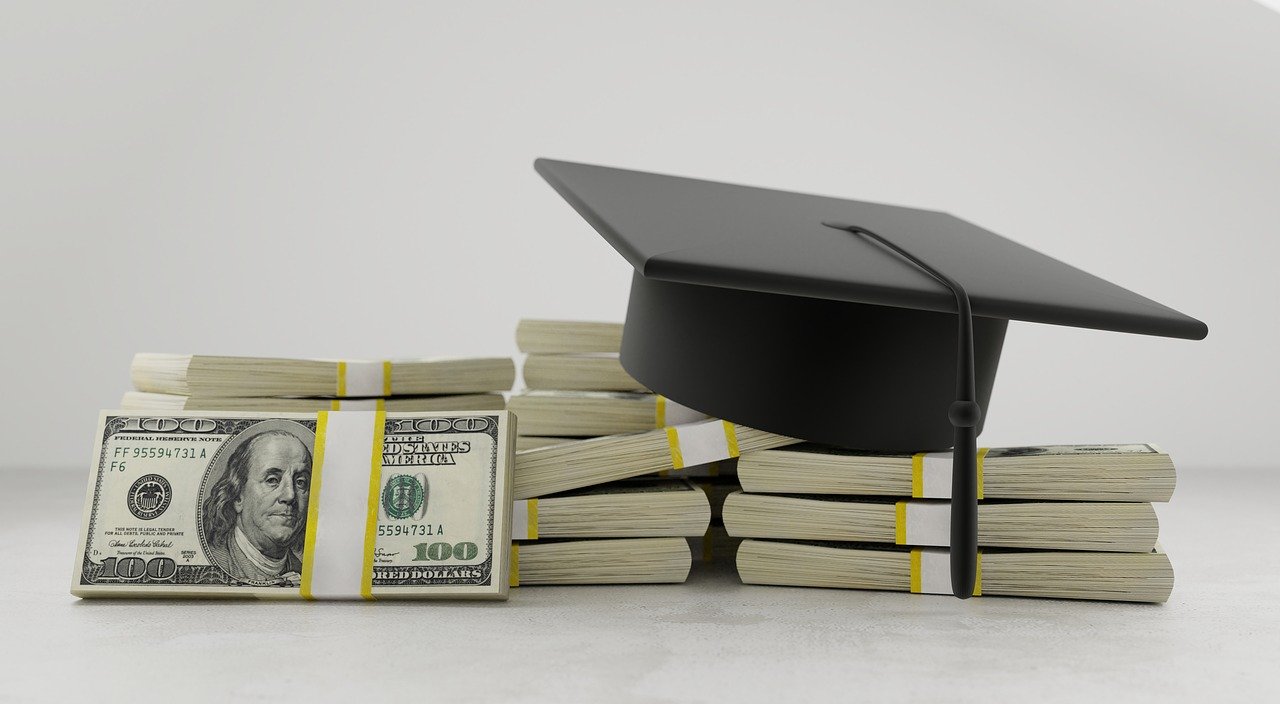
Top Best Federal Student Loans of 2024
Federal Student Loans: If you’re a student looking at ways to pay for college in 2024, federal student loans should be at the top of your list. With interest rates still low and flexible repayment options, these loans remain one of the best funding sources out there. In this article, we’ll walk through the leading federal loan programs for the 2024 academic year. We’ll outline eligibility requirements, loan limits, interest rates, and key benefits like loan forgiveness options. Whether you’re taking out loans for the first time or looking to consolidate existing debt, you’ll learn the essential information you need to leverage these programs. Let’s dive in and unpack the finest federal borrowing options that 2024 has to offer students seeking financial aid.

What are Federal Student Loans?
Federal student loans are loans issued by the federal government to help students pay for college. They typically have fixed interest rates and flexible repayment terms that are designed to make repayment affordable. The most common types of federal student loans are:
- Direct Subsidized Loans: Issued to undergraduate students who demonstrate financial need. The government pays the interest while you’re in school at least half-time, during grace periods, and deferment periods.
- Direct Unsubsidized Loans: Issued to undergraduate, graduate, and professional students; there is no requirement to demonstrate financial need. You are responsible for paying the interest during all periods. If you choose not to pay the interest while you’re in school and during grace periods and deferment, your interest will accrue and be capitalized (that is, your interest will be added to the principal amount of your loan).
- Direct PLUS Loans: Issued to graduate or professional students and parents of dependent undergraduate students. Borrowers are responsible for paying the interest during all periods. Financial need is not required. Borrowers must undergo a credit check.
- Direct Consolidation Loans: Allow you to combine all of your eligible federal student loans into a single loan with a fixed interest rate. This can help make repayment more affordable by giving you up to 30 years to repay the loan. You may also be eligible for income-driven repayment plans and loan forgiveness programs.
To apply for federal student aid, including federal student loans, you’ll need to submit the Free Application for Federal Student Aid or FAFSA form. The FAFSA will determine your financial need and eligibility for need-based aid. Federal student loans are a great option because they provide many benefits like fixed rates, income-driven plans, and loan forgiveness. Be sure to explore all your options so you can find the loans that are right for your situation.
READ ALSO: Top Best Private Student Loans of 2024
The Top 5 Best Federal Student Loans of 2024
The federal government offers several types of student loans to help you pay for college. Here are the top 5 federal student loans to consider for 2024:
1. Federal Pell Grants
Pell Grants provide undergraduate students with up to $6,345 for the 2024-2025 school year to help pay for college. Unlike loans, Pell Grants do not need to be repaid. To qualify, you must demonstrate financial need and be enrolled at least half-time in an undergraduate program.
2. Federal Direct Subsidized Loans
Subsidized loans are available to undergraduate students with financial need. The government pays the interest on these loans while you’re in school at least half-time, during grace periods, and during deferment periods. For 2024-2025, the maximum amount is $5,500 for first-year students, $6,500 for second-year students, and $7,500 for third-, fourth- and fifth-year students.
3. Federal Direct Unsubsidized Loans
Unsubsidized loans are available to undergraduate and graduate students regardless of financial need. You are responsible for paying the interest on these loans during all periods. For undergraduate students, the maximum amounts are the same as subsidized loans. For graduate students, the maximum is $20,500 per year.
4. Federal PLUS Loans
PLUS loans are federal loans available to graduate students and parents of dependent undergraduate students to help pay for college expenses not covered by other financial aid. The maximum amount is the cost of attendance minus any other financial aid received. Interest rates are usually higher than for subsidized and unsubsidized loans.
5. Federal Perkins Loans
Perkins Loans are low-interest federal student loans for undergraduate and graduate students with exceptional financial need. The maximum amount is $5,500 per year for undergraduates and $8,000 per year for graduate students. Perkins Loans are provided by the school you attend and administered by the Department of Education. Not all schools participate in the Perkins Loan program.
Repayment for most federal student loans begins after you graduate, leave school, or drop below half-time enrollment. Federal student loans typically offer flexible repayment options, such as income-driven repayment plans. Be sure to explore all options to find a plan that fits your needs.
FAQs
What’s the difference between federal and private student loans?
Federal student loans are funded by the government, while private student loans are offered by banks, credit unions, and other private lenders. Federal loans typically have fixed interest rates and flexible repayment options. Private loans usually have higher, variable interest rates and less flexible terms.
What types of federal student loans are available?
The main types are:
- Perkins Loans: Low-interest loans for undergraduate and graduate students with exceptional financial need.
- Subsidized Stafford Loans: Need-based loans for undergraduate students with the government paying the interest while you’re in school.
- Unsubsidized Stafford Loans: Non-need-based loans for undergraduate and graduate students with interest accruing from the time of disbursement.
- PLUS Loans: Loans for graduate students and parents of dependent undergraduate students to cover any costs not covered by other aid. Interest accrues from the time of disbursement.
How much can I borrow?
Loan amounts depend on factors like your year in school, dependency status, and the type of loan. Undergraduate Stafford Loan limits are $5,500 to $12,500 per year. Graduate students can borrow up to $20,500 per year in Stafford Loans. PLUS Loans allow graduate students and parents to borrow up to the full cost of attendance minus any other aid received.
What are the current interest rates for federal student loans?
For loans disbursed between July 1, 2023 and June 30, 2024, interest rates are:
- 5.05% for undergraduate Stafford Loans
- 6.60% for graduate Stafford Loans
- 7.60% for PLUS Loans
Rates are fixed for the life of the loan. The government pays the interest on Subsidized Stafford Loans during school and grace periods. Interest accrues and is capitalized on other loan types from the time of disbursement.
When do I have to repay my federal student loans?
For most federal student loans, you have a six-month grace period after leaving school or dropping below half-time enrollment before repayment begins. PLUS Loan repayment starts 60 days after the final disbursement. You can choose from several repayment plans with terms of 10-30 years. Certain income-driven plans offer loan forgiveness after 20-25 years of payments.




